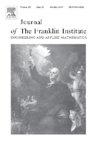仅边界输入的层合Timoshenko梁系统的快速控制
IF 4.2
3区 计算机科学
Q2 AUTOMATION & CONTROL SYSTEMS
Journal of The Franklin Institute-engineering and Applied Mathematics
Pub Date : 2025-06-30
DOI:10.1016/j.jfranklin.2025.107742
引用次数: 0
摘要
本文研究了具有抗阻尼和抗刚度项的独特边界条件下双层Timoshenko组合梁的快速控制问题。在我们之前关于单层Timoshenko光束的发现的基础上,我们探索了新的方面,包括实现双层Timoshenko复合光束的任意快速衰减率以及可能导致快速发散的边界特征的影响。我们的方法围绕着一种转换方法:提出一种类似黎曼的变换,将双层Timoshenko光束的状态变量转换为包含偏积分微分方程(PIDEs)和常微分方程(ode)的一维双曲系统。然后利用PDE反演技术设计了一种保证L2范数原点处闭环稳定的控制律。可调的控制参数有助于实现任意快速的收敛速率。此外,我们扩展了我们的控制方法,以适应纵向动力学,产生具有显著优点的可比结果。最后,通过数值模拟验证了理论结果。本文章由计算机程序翻译,如有差异,请以英文原文为准。
Fast control of a laminated Timoshenko beam system with only boundary inputs
In this paper, we investigates the fast control problem of double-layer Timoshenko composite beam under unique boundary conditions characterized by anti-damping and anti-stiffness terms. Building upon our previous findings concerning single-layer Timoshenko beam, we explore novel aspects including the achievement of an arbitrarily swift decay rate for the double-layer Timoshenko composite beam and the impact of boundary characteristics that potentially lead to rapid divergence. Our methodology revolves around a transformative approach: proposing a Riemann-like transformation to convert the state variables of double-layer Timoshenko beams into a 1-D hyperbolic system integrating partial integro-differential equations (PIDEs) and ordinary differential equations (ODEs). Then we harness PDE backstepping techniques to design a control law ensuring closed-loop stability at the origin in the norm. The adjustable control parameters facilitates the attainment of arbitrarily rapid convergence rates. Moreover, we extend our control approach to accommodate longitudinal dynamics, yielding comparable outcomes of significant merit. Finally, the numerical simulation verifies our theoretical result.
求助全文
通过发布文献求助,成功后即可免费获取论文全文。
去求助
来源期刊
CiteScore
7.30
自引率
14.60%
发文量
586
审稿时长
6.9 months
期刊介绍:
The Journal of The Franklin Institute has an established reputation for publishing high-quality papers in the field of engineering and applied mathematics. Its current focus is on control systems, complex networks and dynamic systems, signal processing and communications and their applications. All submitted papers are peer-reviewed. The Journal will publish original research papers and research review papers of substance. Papers and special focus issues are judged upon possible lasting value, which has been and continues to be the strength of the Journal of The Franklin Institute.

 求助内容:
求助内容: 应助结果提醒方式:
应助结果提醒方式:


